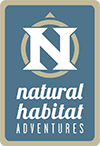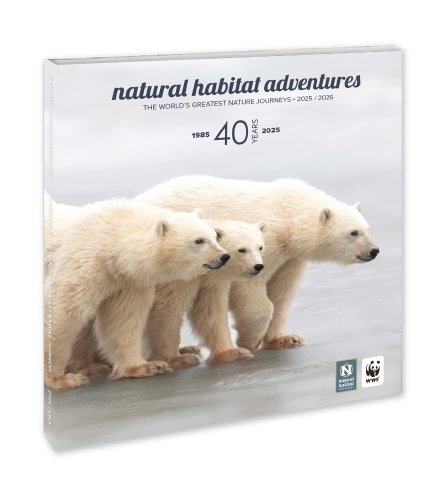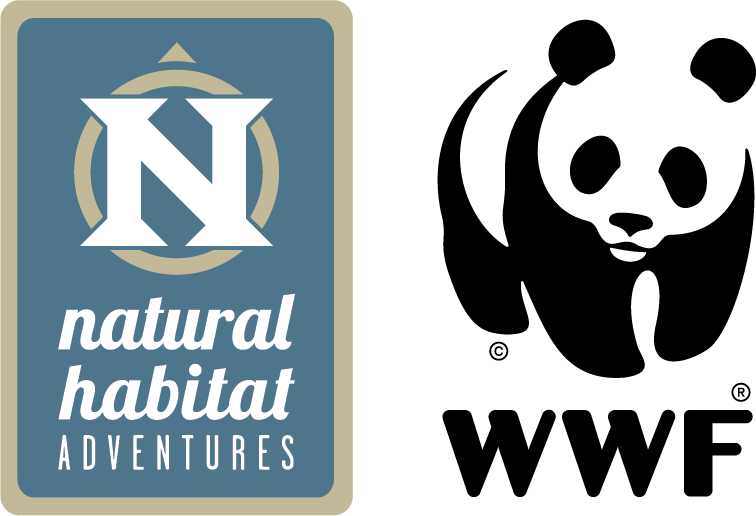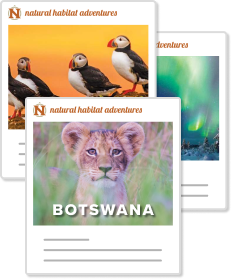Itinerary
Arrive in Bozeman, where you’re met at the airport and transferred to our 4-star hotel in the heart of the city's historic downtown. Bozeman offers a classic example of the Old West/New West dichotomy, which creates interesting street photography opportunities for those who arrive in advance of our welcome dinner. With a rich mining, trapping and ranching heritage, Bozeman boasts 40 individual properties on the National Register of Historic Places. It is also home to Montana State University and has a thriving economy built on growing tourism and tech sectors.
At this evening’s welcome dinner, meet your Photo Expedition Leader who will offer an overview of the adventure to come and answer questions about gear and photo opportunities. A professional photographer skilled at capturing high-quality images of the animals and landscapes of the Greater Yellowstone Ecosystem, your guide is also an expert naturalist whose understanding of wildlife behavior will be essential to getting the images you covet.
Day 2: Paradise Valley / Yellowstone National Park—Mammoth Hot Springs / Wolf Tracking / Gardiner
Depart early this morning, traveling in specialty North American Safari Cruisers to follow the Lewis & Clark Trail over Bozeman Pass to the Yellowstone River. Today will be a primer into landscape and wildlife photography. While in transit, your Photo Expedition Leader will offer instruction on helpful skills for shooting Yellowstone in the winter: understanding focus, composition, white balance, and exposure.
We spend the morning in the Paradise Valley in search of eagles, mule deer and pronghorn antelope. The ragged heights of the Absaroka Range provide a dramatic backdrop for landscape photos. En route, look for wintering bighorn sheep in Gardiner River Canyon. We enter the park through the northern entrance at Gardiner, then continue to Mammoth Hot Springs. There's plenty of time to photograph the thermal activity as super-heated water flows over the white limestone terraces, which some observers describe as a "cave turned inside out."
Later this afternoon, we enter Yellowstone’s Northern Range, the best place in the park to search for wolves, and our first possible chance to capture photographs of them. More frequently, we spot coyotes, elk and bison against the snow-mantled landscape. As dusk fades, we return to Gardiner, just outside the park boundary, to spend four nights.
Day 3: Northern Range Wolf Tracking / Hartman Photo Gallery Visit
Following an early breakfast, we're off through the park's northern expanse on an intensive search for wolves. This broad, glacially formed expanse of grassland laced with streams is prime gray wolf habitat with abundant elk, bison and other prey animals. Bring your telephoto lens to capture the elusive wolves which are typically seen at a distance. We’ll also have the opportunity to photograph with the aid of high-powered spotting scopes, also known as digiscoping.
After lunch, we head to Cooke City to visit the Hartman Gallery, with a slide presentation by renowned Yellowstone wildlife photographer Dan Hartman. An award-winning wildlife photographer and videographer whose work has been featured in National Geographic and the BBC, Dan will share insights about wolves and wolf photography will inspire your visual storytelling and unlock your creative potential. Put his advice into practice in the waning light of mid-afternoon when we head back into the Northern Range for more wolf tracking, knowing our chances to see them are best at dawn and dusk.
Day 4: Lamar Valley Wolf Tracking
Rising early once more, we return to the Lamar Valley and environs to track wolves. Our Photo Expedition Leaders have spent years observing them in this isolated northeast corner of the park, and our experience is enhanced by their in-depth knowledge of wolf behavior and the various individual wolves known to park researchers. While wolves are our primary focus, we expect to photograph a host of Yellowstone wildlife on this vast expanse of open range: elk, pronghorn, moose, coyote, bighorn sheep, bald eagles and bison by the dozens with icicles clinging to their steaming coats. We’ll work on mastering composition, as we commonly encounter species sharing the same space—moose backdropped by a herd of bison, or a sheep's curling horns peeking over a cliff as an eagle glides overhead. The wintry tableau makes for dramatic images as animals stand out against the white landscape.
Day 5: Lamar Valley Wolf Tracking / Cinematographer Visit
Rising early to capitalize on golden hour lighting, we return to the Lamar Valley for more wildlife and landscape photography. After reviewing images shot in days prior, we’re ready to push ourselves creatively. Your Photo Expedition Leaders will offer guidance on finding new ways to capture the bison, bighorn sheep, ravens and other creatures we encounter as we pursue wolves. Experiment with shutter speed and depth of field, and be prepared for some macrophotography as we examine the snowpack for signs of winter wildlife, from weasel tunnels to scat and bison head imprints created as these one-ton beasts forage for buried grasses. Search for bear claw marks on the trees and wolf tracks under foot. This evening we're joined by a wildlife cinematographer who shares inspiring footage of the park's legendary animals.
Day 6: Blacktail Plateau / Bozeman
Today we explore the Blacktail Plateau’s sweeping hills and open forests in the park's northern reaches, by vehicle and on foot. Among Yellowstone’s best winter range, this habitat is home to large herds of bison and elk due to minimal snow on the often-windblown slopes. The landscape lends itself to layered compositions. Frosty trees and the spaces between them filter the light in visually interesting ways, and opportunities to compose artistic and iconic wildlife are abundant. The plateau is also frequently the site of the first post-hibernation grizzly bear emergence in Yellowstone.
We exit the park by late afternoon and head north once more through the Paradise Valley in the early evening light, with flexibility to stop for impromptu photo shoots. The Yellowstone River flows through this aptly named landscape, renowned for world-class trout fishing. The valley is also an important winter range for wildlife, and we have excellent opportunities to spot bald eagles, rough-legged hawks, mule deer, white-tailed deer and elk. Reaching Bozeman once more, we share a farewell dinner together.
Day 7: Bozeman / Depart
Although you’re leaving the greater Yellowstone ecosystem today, you’re bringing part of it with you. Anticipate the enjoyment of reviewing, editing and sharing your images as our Yellowstone wolf safari concludes. Those departing today will be transferred to the airport. Travelers wishing to spend extra time in Bozeman will have the remainder of the day free to explore this historic Old West/New West town. And though you’re leaving the greater Yellowstone ecosystem, you’re bringing a part of it home with you.
Please Note: Yellowstone's wolves are highly elusive and almost always seen at a significant distance, often over a mile away. But we bring them in closer with high-powered spotting scopes, and with the use of "digiscoping"—using cameras in tandem with scopes—we can often capture exhilarating photographs. Natural Habitat Adventures is an authorized permittee of Grand Teton and Yellowstone national parks.

























